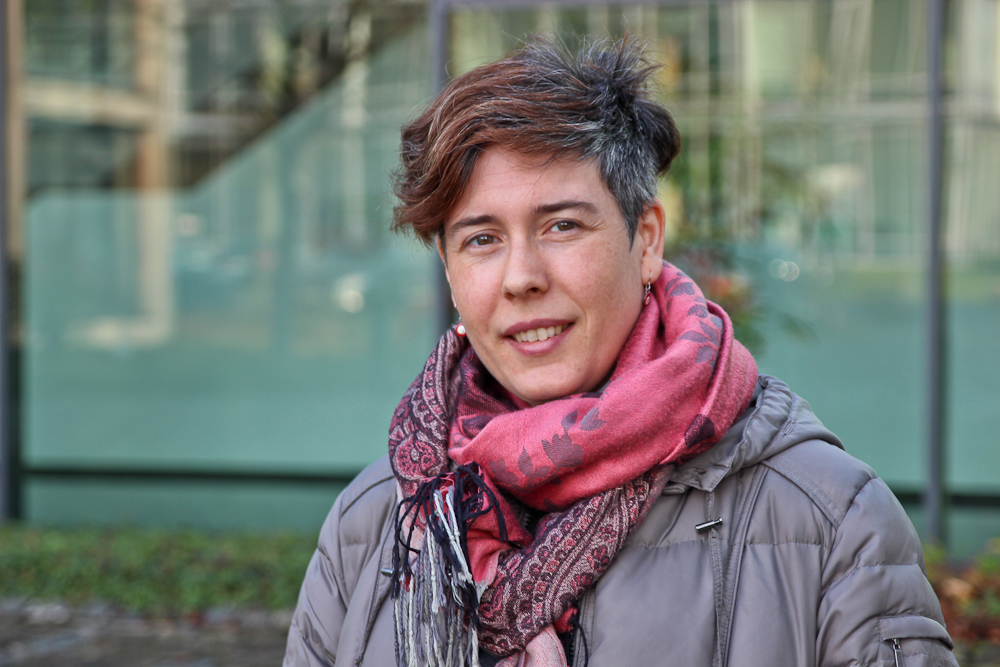Dr. Patrícia Branco
Centro de Estudo Sociais (CES), Universidade de Coimbra
Curriculum Vitae
Patrícia Branco studierte an der Rechtswissenschaftlichen Fakultät der Universität Coimbra, Portugal, und erwarb einen LL.M. in Legal Theory von der European Academy of Legal Theory in Brüssel. 2013 wurde sie mit einer Arbeit zu „Courthouses as spaces of recognition, functionality and access to justice – the case study of family courts in Portugal“ im Rahmen des Promotionsprogramms „Law, Justice and Citizenship in the 21st Century“ an der Universität Coimbra promoviert. Seit 2006 war sie an zahlreichen Forschungsprojekten beteiligt und ist zurzeit wissenschaftliche Mitarbeiterin am Centro de Estudos Sociais (CES) an der Universität Coimbra sowie Mitglied der Forschungsgruppe DECIDe. Dr. Brancos gegenwärtige Forschungsschwerpunkte sind der Zugang zu Recht und Gerechtigkeit, die Architektur von Gerichtsgebäuden, Räume der Gerechtigkeit und des Rechts, die Beziehungen zwischen Recht und den Geisteswissenschaften, und die Entwicklungen im Familien- und Kinderrecht, die sie im Zusammenhang mit Debatten der Genderforschung betrachtet. Von Januar bis Juni 2015 war Patrícia Branco Fellow am Käte Hamburger Kolleg „Recht als Kultur“.
Forschungsprojekt
Into, from and back again: a discussion on courthouse architecture, the image of justice and literature
Taking as its starting point the research done in the doctoral dissertation, with a thesis entitled “Courthouses as spaces of recognition, functionality and access to justice – the case study of family courts in Portugal”, I intend, with this research project, to deepen two lines of research.
Firstly, to discuss and expand the analytical dimensions of recognition, functionality and access to justice with the aid of literature. To do so, I have selected, so far, four pieces that deal with the image of courthouses and/or spaces of justice and that I propose to examine. These are: 1. O Juiz da Beira (1525), by Gil Vicente, a Portuguese farce from the 16th century; 2. Alice’s Adventures in Wonderland (1865), by Lewis Carroll; 3. Franz Kafka’s The Trial (1925); 4. And The Bell Remembered (1939), a short novel by the American writer Thomas Wolfe.
Secondly, and specifically addressing the noticed disappearance of images of justice from courthouses, with the use of the materials collected during fieldwork in Portugal (photos), a discussion on the idea of justice as a woman, her attributes and features in the 21st century, basing such discussion in the socio-legal sciences, examining in particular the role of women in the legal professions and women’s access to justice, placing the Portuguese reality in a world-wide context.
If law and justice are, too, social and cultural facts, it is time to talk about them using the whole chocolaty language of our social and cultural world (Manderson, 2008). And here comes the meaning of the chosen title – into, from and back again: the intention of this research project is to look at law and justice from a visual standpoint, instead of considering its texts, but looking for other types of text, as is the literary one. It is such a circular relationship between buildings (architecture), images (photos taken of paintings, sculptures and tapestries in the Portuguese courthouses) and text (literature) that I intend to examine and explore, with the tools provided by the discussions at the Käte Hamburger Kolleg “Recht als Kultur”.
Publikationen (Auswahl)
- Odore di Napoli: What if Jurisprudence Came to us through Smell? (mit Richard Mohr), Non Liquet [The Westminster Online Working Papers], Law and the Senses Series – Smell (2015), S. 58-75.
- La justice en trois dimensions: représentations, architectures et rituels (mit Laurence Dumoulin), Droit et Société, 87, 2014, S. 485-505.
- A (des)igualdade de género nos tribunais de família e menores: um estudo de sentenças de regulação das responsabilidade parentais em Portugal (mit João Pedroso und Paula Casaleiro), Estudos de Sociologia, 19, 36, 2014, S. 81-100.
- Sociologia do(s) Espaço(s): Diálogos Interdisciplinares (Hg.), Coimbra: CES/Almedina 2013.
- Arquitetura Judiciária e Acesso ao Direito e à Justiça - O estudo de caso dos tribunais de família e menores em Portugal (mit Paula Casaleiro), in: Patrícia Branco (Hg.): Sociologia do(s) Espaço(s) da Justiça: Diálogos Interdisciplinares, Coimbra: CES/Almedina 2013, S. 185-228.
- Entre a forma e a função: arquitectura judiciária e acesso ao direito e à justiça nos tribunais com competência em família e menores (mit Paula Casaleiro, João Pedroso, Valerio Nitrato Izzo und Cláudia Pozzi), in: Lex Familiae, 15, 2011, S. 33-56.
- On Prisons and Theatres: Santo Stefano and San Carlo, in: Law Text Culture, 14, 1, 2010, S. 277-286.
- Justice et architecture: la relation entre accès au droit et architecture judiciaire, in: Guillaume Protière (Hg.): Espaces du Droit et Droit des Espaces, Paris: L’Harmattan 2009, S. 49-57.


